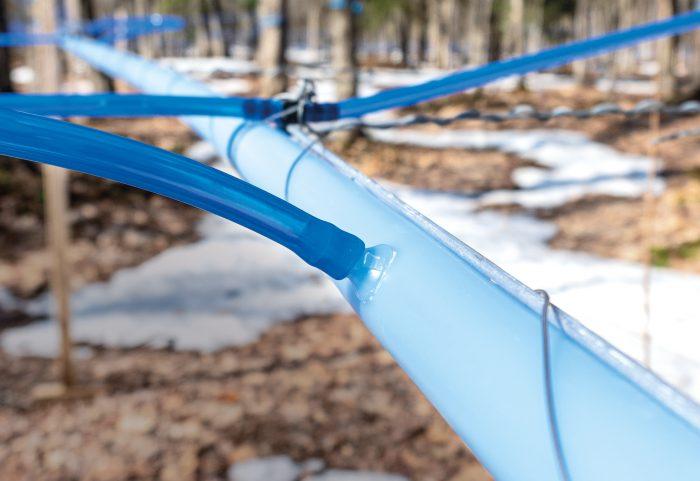Native Trees of Maryland: Sugar Maple, Acer saccharum
Jonathan Kays, Emeritus Forestry Specialist
It was a Tuesday, I remember
After school this last September
Walking home I chanced to see
My very favorite maple tree
- “Colors” by John McCutcheon
No fall season in the Northeast US and Canada is complete without the vibrant gold, yellow, and red color of sugar maple leaves dominating the landscape, while providing delicious maple syrup, and quality hardwood used for everything from furniture to bowling alleys. Sugar maple prefers to grow on noncompacted, fertile, moderately moist, well drained, slightly acid soils and is a common sight in the Appalachian Mountains to those in New England and Canada.

In the northern forest, sugar maple trees are often found as a dominant or co-dominant species (near top of the canopy) in mixed hardwood stands, commonly associating with other trees like white ash, northern red oak, yellow birch, beech, basswood, and black cherry. As the forest matures, sugar maple tends to become the predominant species. In Maryland, sugar maple is usually found in the western Piedmont forests and the Appalachian mountains.
Ecologically, sugar maple is capable of growth into the canopy from the forest floor. It thrives in full sunlight but is very tolerant of shade so it can establish as a seedling and grow up through the existing canopy. This ecological niche is unique and makes it one of few desirable tree species that does not require full sunlight to establish and grow to maturity.
Sugar maple can do well in residential landscapes but is not a good candidate for restricted urban sites. Dieback and decline in urban maple trees is usually attributed to soil compaction, drought, or toxic effects of road deicing salt. In its native forest environment, decline and stress are caused by insect defoliation or drought. Sugar maple is long-lived and can survive for 300 to 400 years.
Like all maples, the buds, leaves and branches lie opposite on the stem. The leaves are distinct with five square-topped lobes but can be confused with Norway maple. Sugar maple has small, narrow brown buds but Norway buds are stout, purplish and exude white liquid when the stem is broken. The bark is light gray to gray-brown and becomes deeply furrowed and rough with age.
Sugar maple is known to most people for the maple syrup produced from the sap in “sugarbush” forest areas. Trees in a sugarbush are thinned from an early age to create room for crowns to expand which enhances sap production and creates areas that can be managed for many decades. The process of tapping trees and hanging buckets to collect sap has been supplemented with engineered tubing systems that collect sap to a central collection area. The maple syrup season typically lasts 4-6 weeks from late winter to early spring, and it takes 40 gallons of sap to make a gallon of syrup. A few sugarbush operations are found in western Maryland but it is a major industry in the New England states. However, 80% of the world’s maple syrup comes from Canada.

Sugar maple is considered a “hard maple” species compared to the softer woods of red and silver maple as it produces dense strong wood used for bowling alleys and furniture. If you want some vibrant gold, yellow, and red color in your yard, and if you have decent soil and space for the root system to spread, sugar maple is a good choice. If you are looking for seedlings to plant in an existing forest and to grow into the canopy, sugar maple may be an option.
